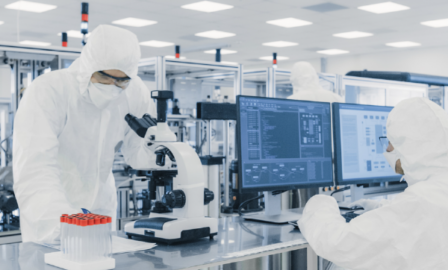2024 Medical Device Industry Trends
Read our updated trends report here: 2025 Medical Device Industry Trends
Clarkston’s team of medical device consultants have highlighted the top medical device trends that businesses should consider. Read all 5 trends for 2024 by downloading the full report here.
As we continue into 2024, the medical device industry is evolving rapidly. Patients are increasingly demanding convenience, accuracy, and an overall smoother experience from the healthcare system. Medical device companies can help facilitate these changes with innovative and technology-driven solutions. In 2024, medical devices will become smarter, more AI (Artificial Intelligence)-driven, and more interconnected, enabling earlier diagnosis and enhancing communication between doctor and patient. In addition, medical device companies will continue to prioritize protection against cyber-attacks, security backups, and sustainability initiatives to improve general community safety. This report dives into the five medical device industry trends we expect to see impacting the industry in 2024 and beyond.
2024 Medical Device Industry Trends
Trend #1: Artificial Intelligence Opportunities
Along with many other industries, Artificial Intelligence (AI) is transforming the medical device industry, enabling greater data-driven analytics and improving the doctor-patient experience. AI can analyze thousands of rows of data at a much faster rate than the human eye. Traditional labor-intensive jobs, like a clinical researcher or healthcare data analyst, can be made easier through a simple computer algorithm with AI; from that data, they can provide suggested diagnoses or methods of treatment. This technology is crucial to medical devices, as they create hundreds of data points every time they measure blood pressure, heart rate, etc.
While we’ve been leaving diagnosis and healthcare decisions to doctors for years, human error still exists in this field. About 4–17% of hospital admissions are associated with adverse medical events, and nearly two-thirds are preventable. Doctors may overlook certain symptoms, have implicit bias, or just make simple mistakes when reading data. According to a study on medical students, 73% of students held at least one false belief about the biological differences of races, which leads to mistakes when assessing a course of treatment.
AI can help omit doctors’ unconscious biases, helping to improve equity in healthcare as well as creating a doctor safety net in which to double-check data. The Internet of Medical Things, or a system of medical cloud data, generates a very large amount of data from medical devices that can be transmitted to doctors. These data points can be analyzed through AI, enabling predictive analysis and monitoring treatment efficiency.
AI can also do more than just provide predictive medical analysis for patients – it can be used in the production and manufacturing processes. AI can enable manufacturers to create a digital factory twin, meaning obtaining a virtual simulation of what is happening in the physical factory. Having digital replicas of the physical manufacturing environments allows organizations to run situations and simulations without affecting production. Organizations can analyze their production processes easily when having a digital tool to help locate inefficiencies and money wasters. As such, medical device production is made simpler and more resourceful with AI, making it an appealing solution for healthcare manufacturers in 2024.
Download the Full 2024 Medical Device Industry Trends Report Here
Trend #2: Internet of Medical Things
In 2024, medical devices are gradually becoming wireless and more advanced, bettering doctor-patient experiences and overall convenience. The Internet of Medical Things (IoMT) is a network of connected medical devices for the transmission and analysis of health data. For example, a blood sugar monitor would keep track of blood sugar levels and transmit those data points to doctors, so doctors can catch a sudden or worrisome change in levels.
In 2024, this cloud technology will be highly sought after as doctors can more easily track and monitor their patients’ health through medical devices – even when they’re not at the physical doctor’s office or hospital. Telemedicine has become a popular method of getting treatment due to its convenience and practicality, and the same can be said for the growing popularity of medical devices.
Hospitals can also use connected medical devices for their in-patient needs. In the case of a busy night with many patients in beds, nurses and doctors can use connected wearables and devices to monitor patient movements and obtain their vitals. Nurses and doctors will be notified if patients have any noticeable change in health, allowing for a larger window of time for treatment, especially in the case of sudden or unpredictable developments. Continue reading by downloading the full report below.
Download the Full 2024 Medical Device Industry Trends Report Here
Read last year’s Medical Device Trends Report here.
Subscribe to Clarkston's Insights
Contributions from Leah Harding




